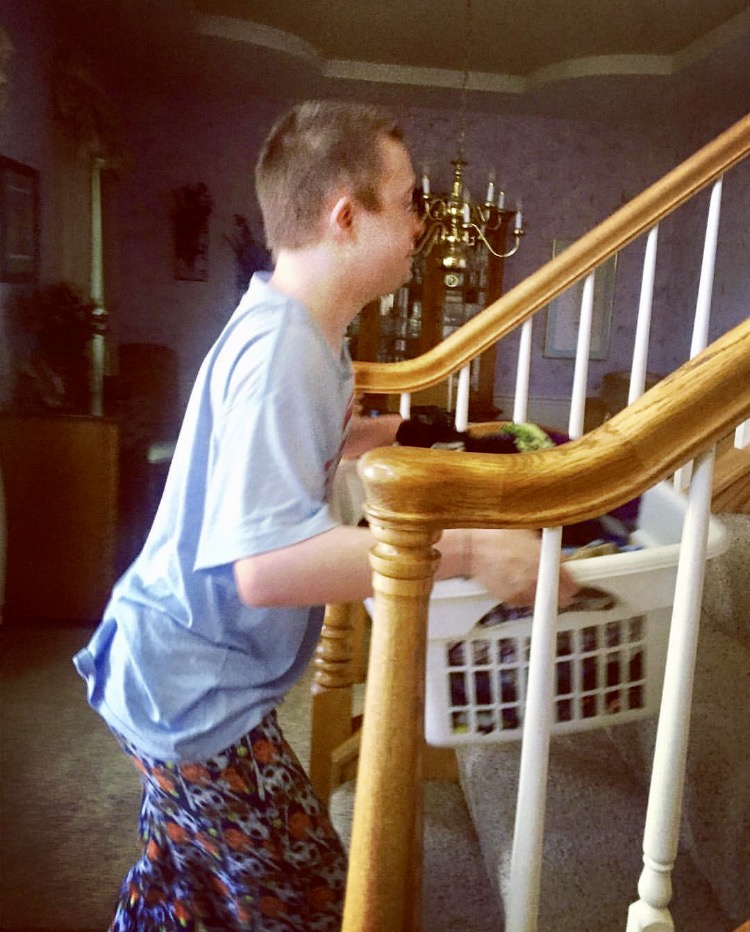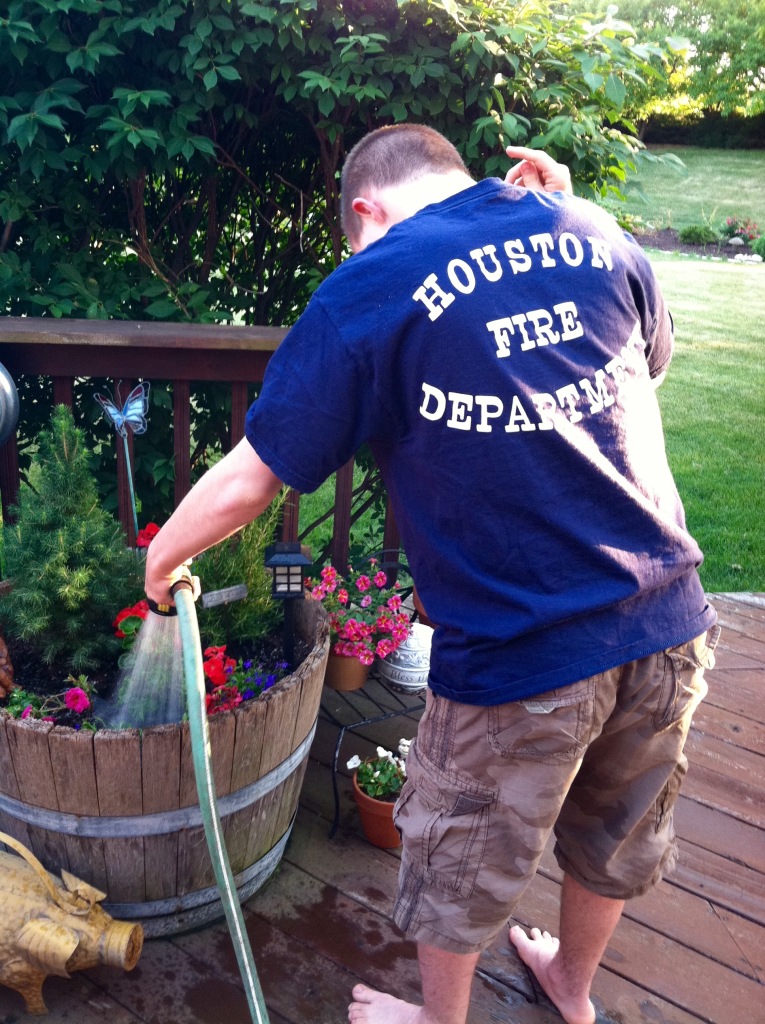Blog #227~Ditch the New Year’s Resolutions: Here’s a Better Idea
How many times have you made a new year’s resolution and failed to reach it?

New Year’s resolutions can be daunting and difficult to keep. This year, I am changing my tune. I’ve adopted a new principle personally and for my son, Nick who is 24 years old, and has a dual diagnosis of Down syndrome and autism (DS-ASD). As a fitness professional for 35 years, my job is to motivate, challenge and inspire my clients. Being fit and healthy isn’t just about eating right and exercising. To feel your best, you must take care of the mind, body and spirit collectively. As a parent of a child with special needs, there are more demands, that can wear on you both physically and emotionally. It is essential to take care of your physical and mental needs to reduce stress and avoid burning yourself out. Bottom line, it’s about self-care so that you can be the best version of yourself and your family!

I was listening to a Sirius XM radio interview with Teddi Mellencamp (yes the daughter of John Mellencamp). Teddi is an accountability coach. She gave a better alternative, instead of making new year’s resolutions. Teddi suggested that you pick 3 things each day that will take care of you personally, and hold yourself accountable. Write them down, and try it for just 5 days. These should be centered around helping you to feel better, both physically and emotionally. By doing this, you begin to create good habits, that leads to confidence, and ultimately changing your lifestyle.
So, I tried it by writing down 2 things each day (3 seemed too much with my busy schedule). Here are a few things I did:
*Cleaner eating- Replace Sun Chips with almonds and make a chicken wrap with only avocado and lettuce.
*Relax, stretch and be mindful of breathing to relax and calm the body,
*Bump up home workout weights from 10 to 12 pounds.
*Be mindful of the gratitude you receive throughout the day
*Eat an extra piece of fruit.
*Turn off the TV and listen to music I enjoy.
*Be more kind and smile at the people you pass and encounter each day.
*Drink one less cup of coffee and replace with more water.
*Go upstairs, every time I needed something, instead of waiting until things have accumulated. (This increased my steps significantly).
*Apply one of the principles of Feng Shui. De-clutter home and clean 8+ years of dust off the high cabinets to increase the flow of chi energy.
*Pray more throughout the day.
*Shop on the outer edges of the grocery store as much as possible. (This is where the nutrient dense, clean and less processed foods are located).
*Respond, and don’t react when I get angry.
*Meditate for 10 minutes.
I have to say, there is a feeling of personal accomplishment when you hold yourself accountable, and do just 2 things a day to promote personal health both physically and emotionally.

My quick and easy tips to get back into fitness:
As a fitness professional, here’s what I suggest on how to start a new fitness program. Don’t set yourself up for failure. Replace the resolution of going to go to the gym 5 days a week with a more reasonable goal. Change the mindset to, doing some physical activity 3-5 days a week. If you can’t make it to the gym, or you are too tired, then get out and walk or tone with weights or an exer-tube for just 10 minutes. Add an extra minute to each workout. It will all add up, and you will build confidence and feel less guilty. Break it down to smaller pieces and you will set yourself up for success! 🙂
My plan to work a little more with my son Nick, who has DS-ASD:
This got me thinking that maybe I should apply this principle with my son, Nick who has Down syndrome and autism. Being a parent, we often feel like we are not doing enough to help our child learn and develop skills. Housework, our jobs, time schedules/demands, and just plain exhaustion gets in our way, which leads to feelings of guilt. So, I am going to just focus on one thing that will help my son be more independent each day.
I started yesterday, by encouraging Nick to use his AAC (Augmentative and Alternative Communication) device. Nick successfully used it to request breakfast and lunch, along with a few other highly preferred rewards he enjoys.
Today, I will continue to focus on Nick using his AAC device by requesting foods and after dinner getting him to ask to take a shower. These are little steps, but they can add up and enable my son to realize the power of using his voice, via his talker. I have to constantly remind myself to be disciplined with not only myself, but with my son. Ultimately, our goal as parents is to guide our children to be as independent as possible and in the process, help them gain more confidence as individuals. There are many jobs around the home that can help your child gain more skills. Nick helps by unloading the dishwasher/groceries, vacuuming, recycling, rolling out garbage cans to the curb, and helps me carry and load the laundry. All of these jobs help to organize and regulate his sensory needs. Just try one thing at a time and give lots of praise for successes!

My final takeaways for self-care for the new year:
*Say goodbye to New Year’s resolutions, that are often impossible to keep for 365 days, feels liberating.
*Shift the mindset to smaller goals is more realistic.
*Little changes add up to building healthy habits.
*A little self-care will help you feel better physically and emotionally each day. Plus, it’s attainable and a more reasonable approach to making positive changes.
*Break things down into smaller pieces builds success and confidence.
Take a few minutes each day for self-care and let go of the feelings of guilt that you aren’t doing enough. Try working in small steps to help your child become more independent and build their skillset around the house. I would love to hear your ideas 2-3 things you might add to improve your mind, body and spirit each day!
That’s what is in my noggin this week.
~Teresa 🙂
Follow Nick on Social Media:
Facebook and Pinterest @Down Syndrome With A Slice Of Autism
Instagram #nickdsautism
Twitter @tjunnerstall


































